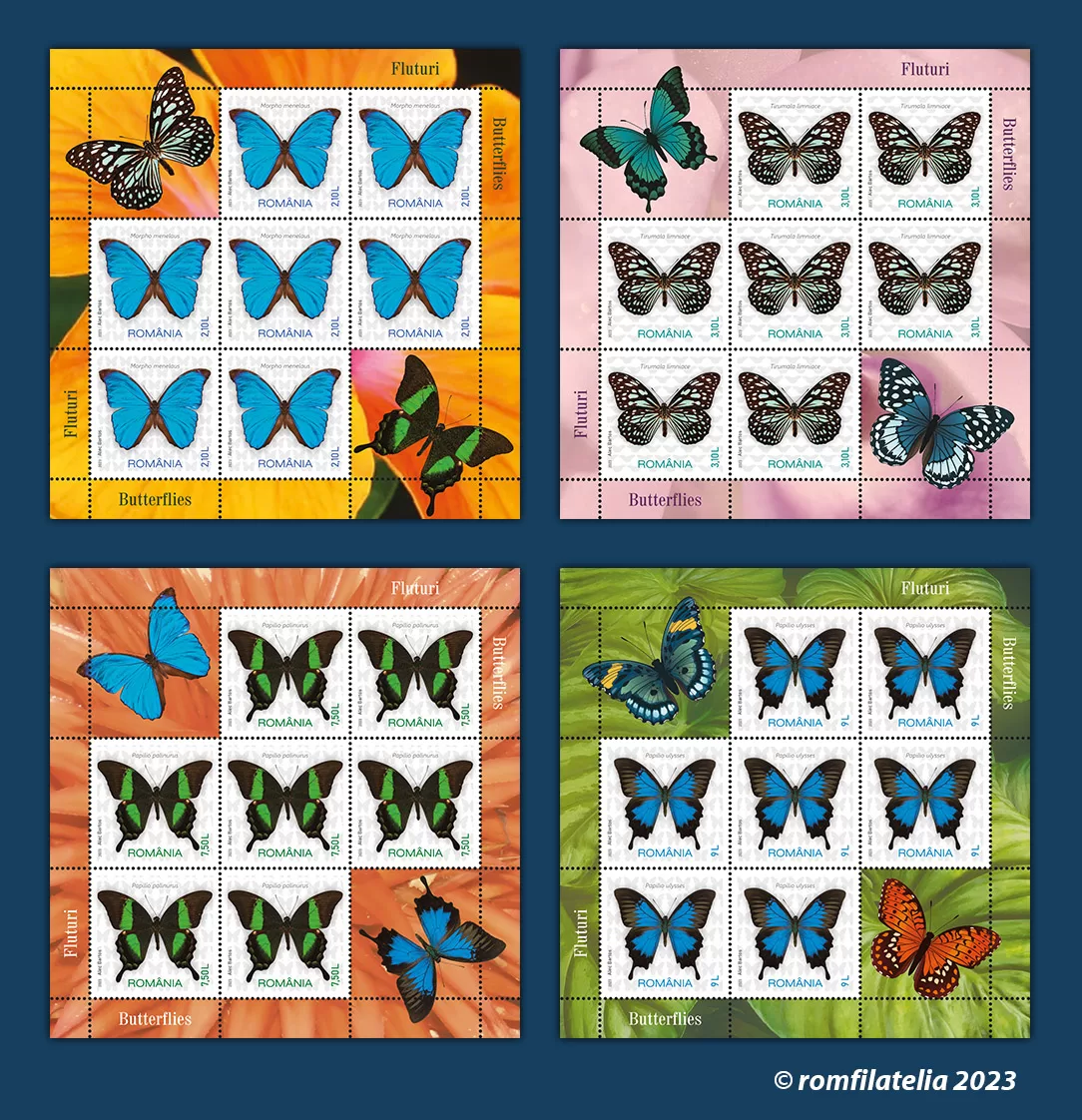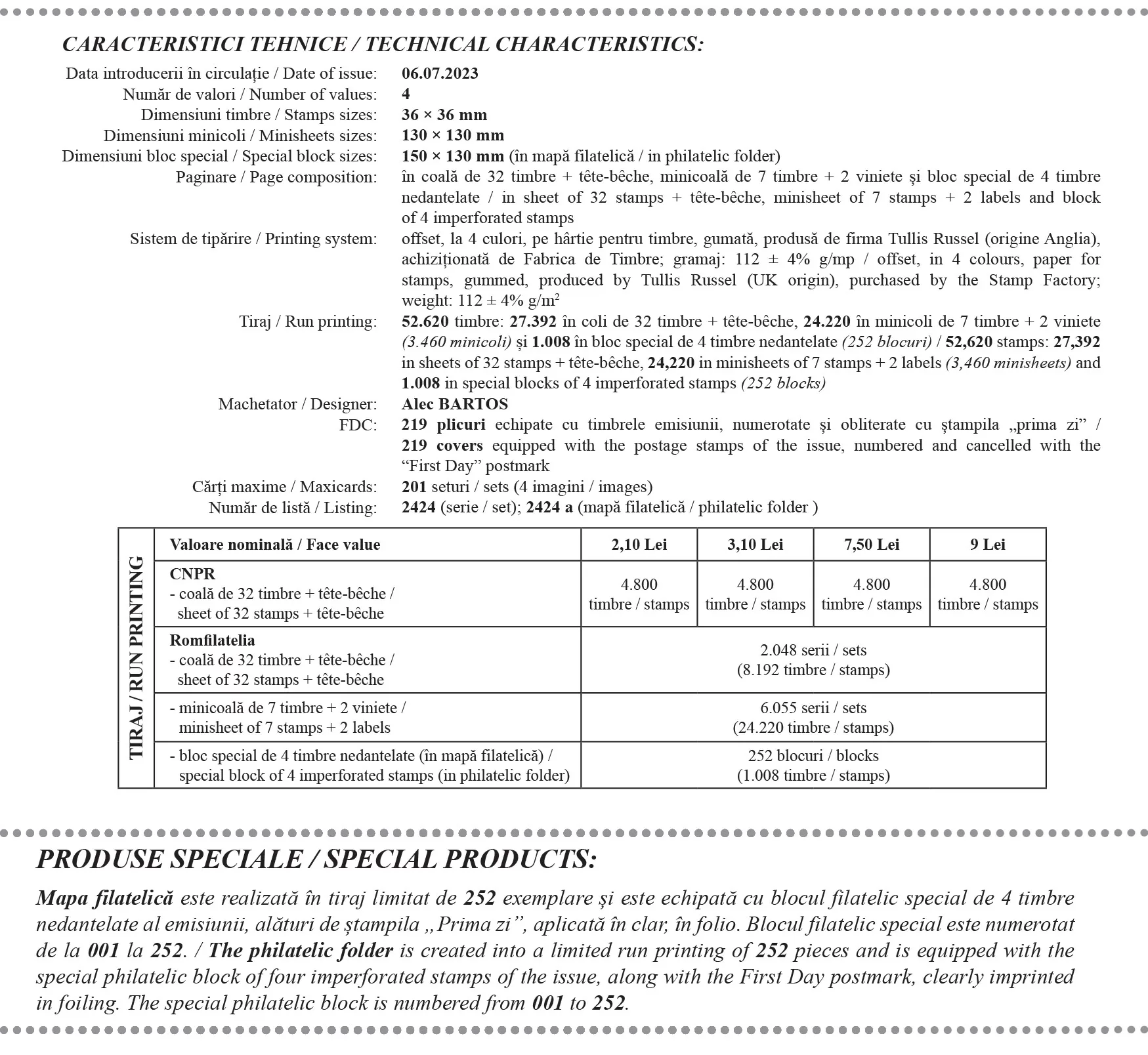 Butterflies represent the best-known and best-studied group within the order Lepidoptera, which includes insects with complete metamorphosis, which in the adult stage have their bodies covered with numerous microscopic scales (from the ancient Greek, λεπίς lepís = scale, πτερόν pterón = wing).
Butterflies represent the best-known and best-studied group within the order Lepidoptera, which includes insects with complete metamorphosis, which in the adult stage have their bodies covered with numerous microscopic scales (from the ancient Greek, λεπίς lepís = scale, πτερόν pterón = wing).
The duration of the biological cycle differs by species, and the duration of the adult stage ranges from a few days to over half a year in species that overwinter as adults.
The postage stamp issue Butterflies, which Romfilatelia introduces into circulation, on Thursday, July 6, 2023, presents the species: Morpho menelaus, Tirumala limniace, Papilio palinurus, Papilio ulysses and Danaus plexippus.
Morpho menelaus (Linnaeus, 1758) is illustrated on the stamp with the face value of Lei 2.10. Is a widespread species in Central and South America, from Panama and Costa Rica to Peru, Bolivia and South Brazil (the state Rio Grande do Sul), the adults having the wingspan of about 15 cm. They have a spectacular appearance, due to the metallic blue colour of the dorsal side of the wings, the shade of which changes depending on the angle at which the light falls.
Tirumala limniace (Cramer, [1775]), is illustrated on the stamp with the face value of Lei 3.10. Is a species widespread in South Asia, from the United Arab Emirates to Taiwan and the North Philippine archipelago, and from South Nepal to Indonesia (the islands of Java, Bali, Timor, etc.). Adults have a wingspan of up to 10 cm, males being significantly smaller than females. The wing pattern consists of bluish-white semi-transparent spots and stripes on a dark tan to black background.
Papilio Palinurus Fabricius, 1787, known as the emerald swallowtail, is illustrated on the stamp with the face value of Lei 7.50. Is a species with the wingspan that reaches about 8-10 cm, found in the mountain forests of South Asia, from East India (the state of Assam) and Bangladesh to the Philippines. The brightly iridescent green of the median stripes on the dorsal side of the wings selectively reflects light, producing blue and yellow rays that, mixed, produce a green sensation.
Papilio ulysses (Linnaeus, 1758), is illustrated on the stamp with the face value of Lei 9. Is a species found in the humid tropical forests of East Indonesia (Moluccas Islands) to New Guinea and the Bismarck and Solomon Islands, and South to Northeast Australia (Queensland). Adults have a wingspan of about 14 cm. The metallic blue colour on the dorsal side of the wings is produced by the peculiar microscopic structure of the scales in this area of the body.
On the First Day Cover is illustrated the monarch butterfly – Danaus plexippus (Linnaeus, 1758), species widely distributed in the Western Hemisphere. In November 2009 it was one of two butterfly species to fly into space aboard the International Space Station on mission STS-129.
Romfilatelia thanks PhD Mihai Stănescu, Collections Manager, Lepidoptera, within the ”Grigore Antipa” National Museum of Natural History for the good collaboration within this issue of postage stamps.



